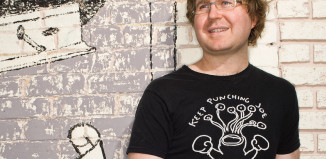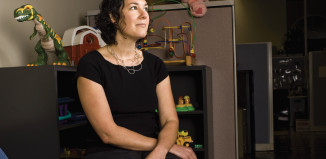Heidi Bloch is a lady with her feet solidly on the ground, and who plays in two courts. One is a legal court – she’s a litigation lawyer, and the other is the tennis court. At 48, the United States Tennis Association league member says she first picked up a tennis racket 10 years ago. Well, that’s when she first picked up a racket with serious intent. The real first time was when, as a kid, her dad tried to teach her how to play. “He spent more time chasing balls than hitting them back to me,” she says. To her regret, she decided tennis was not her game. Now the self-proclaimed late starter can’t imagine a week passing without playing two or three times.
Bloch says she’s by no means an elite athlete, but she loves to exercise and to be outdoors – a fact evidenced by her fit and trim figure. She may have chosen tennis because it’s the perfect exercise for keeping the entire body in shape, but she also has another very compelling reason for playing: its great fun, especially when you reach the level where you feel confident in yourself on the court.
Like a lot of people, Bloch has back problems, and says she has to do specific exercises, such as stretching, plank and exercise bar work, and certain types of sit-ups regularly to strengthen her core. “The worst thing for me is sitting and lack of activity,” she says. “I do all of this in order to allow myself the pleasure of playing tennis.”
Being a successful litigation lawyer offers multiple opportunities for mental challenges and Bloch sees a parallel between the two courts that she finds totally appealing. “Tennis is a great outlet for getting rid of some of my work-related stress,” she says. “At the same time, it allows me to use some of the same skills that I use as a lawyer when trying to out-think and out-smart my opponent.”
The parallel becomes evident when you think about it, because both lawyers and tennis players are in constant motion, they both have to be on their toes, ready to pounce in a split second, and they must anticipate their opponent’s next action and be capable of changing direction without a moment’s hesitation. There’s also another dichotomy between the two professions that hit a strong chord with Bloch: it’s the aspect of fair play between the adversaries. Lawyers frequently tear each other apart during a trial, then ask about one another’s family and share jokes outside the courtroom. “I’d much prefer a legal opponent who is tenacious and does a good job for his client, yet is respectful and plays by the rules with a sense of fair play,” she says. This is exactly how Bloch approaches each tennis game.
When it comes to the two professions, she has different ideas about winning. In a court, Bloch’s working for her client and is there to win. Period. On a tennis court, winning is important for her, but having fun and playing well is just as important. “I’m very competitive in my work,” she says. “So I use up a lot of that will-to-win in court. Sometimes I wish I had more of that competitive spirit left for tennis, but I’d rather play a good tennis game and lose than not play well and win.”
Tennis becomes a game of complicity and sharing when done with her partner, Zoe King. “Zoe’s much better at the game,” says Bloch. In a reflex that’s as succinct as when she analyzes a legal opponent, she explains exactly why her partner is a better player. “We play at the same 3.5 level, but she’s a very good, consistent 3.5 player, and I’m inconsistent. Zoe has played longer and has muscle memory, whereas each time I go onto the court, I have to remember how to hit the ball. Consistency is the key.”
There’s also the social aspect of tennis that appeals to Bloch: “It’s very compatible with my busy professional life, and in terms of building a practice and networking, meeting new people on the tennis court can’t be anything except good.”
Perhaps the best social aspect is one that appeals to both Bloch and King – playing a good match of doubles can be the most perfect way to spend a beautiful Sunday afternoon.




































